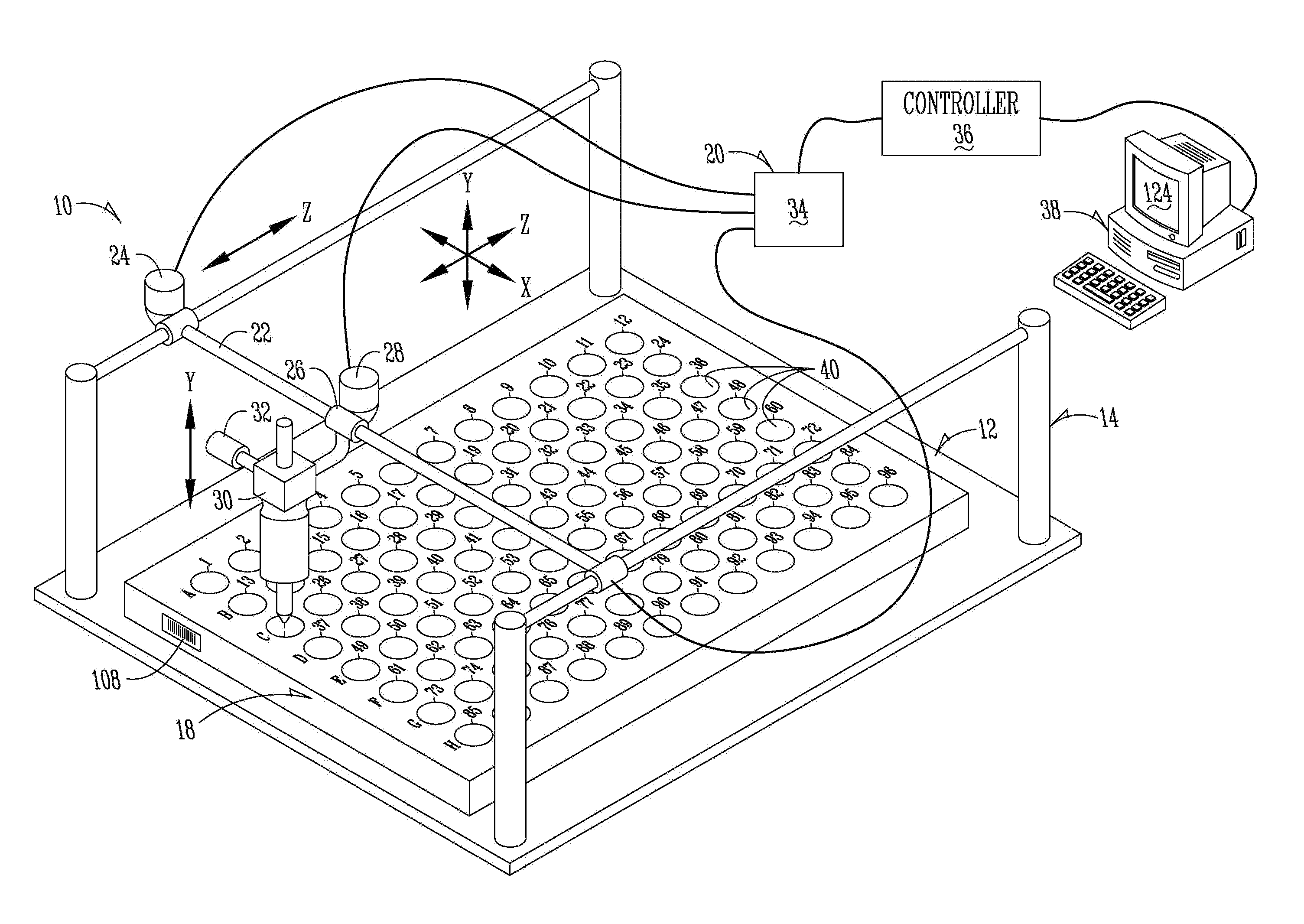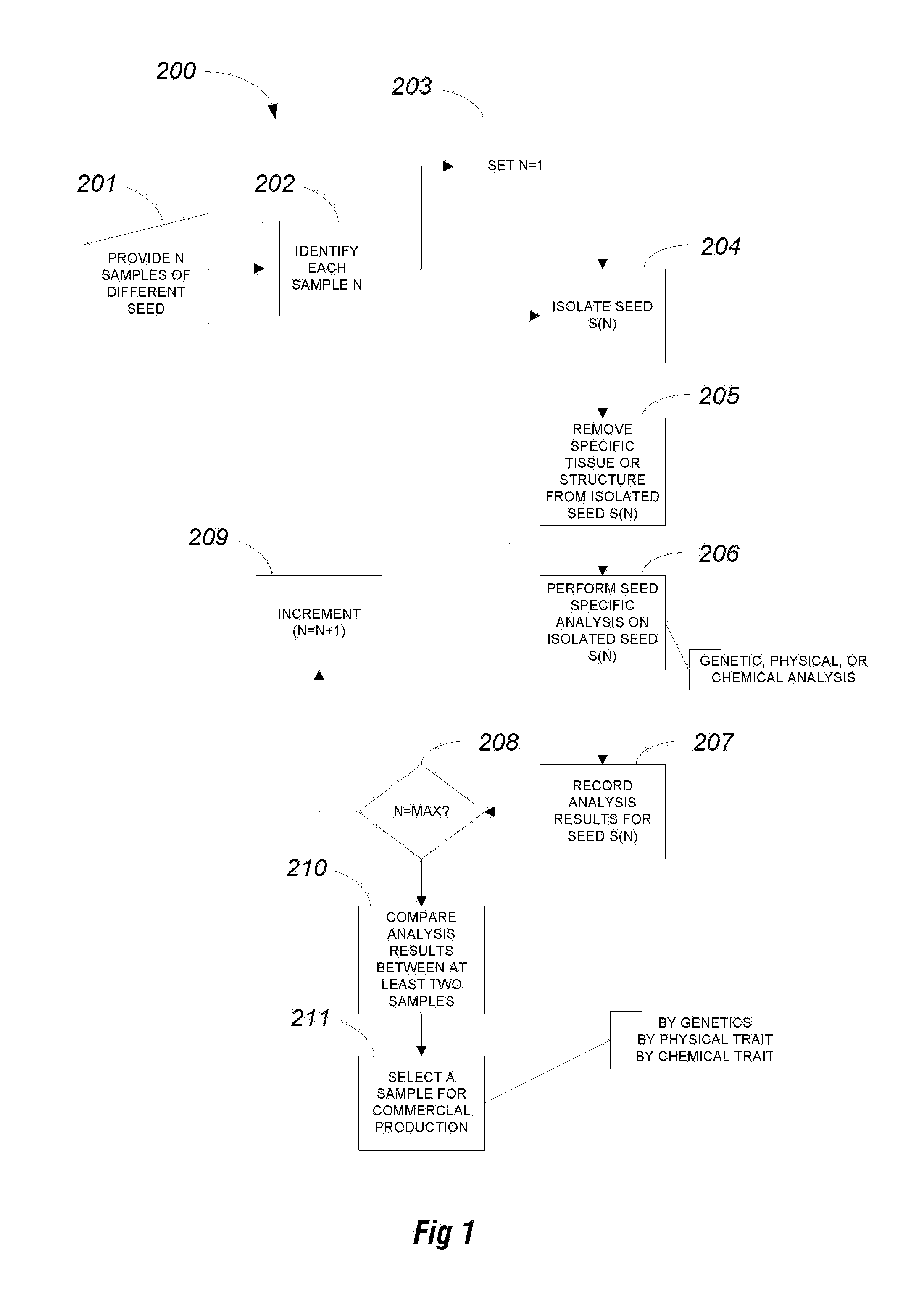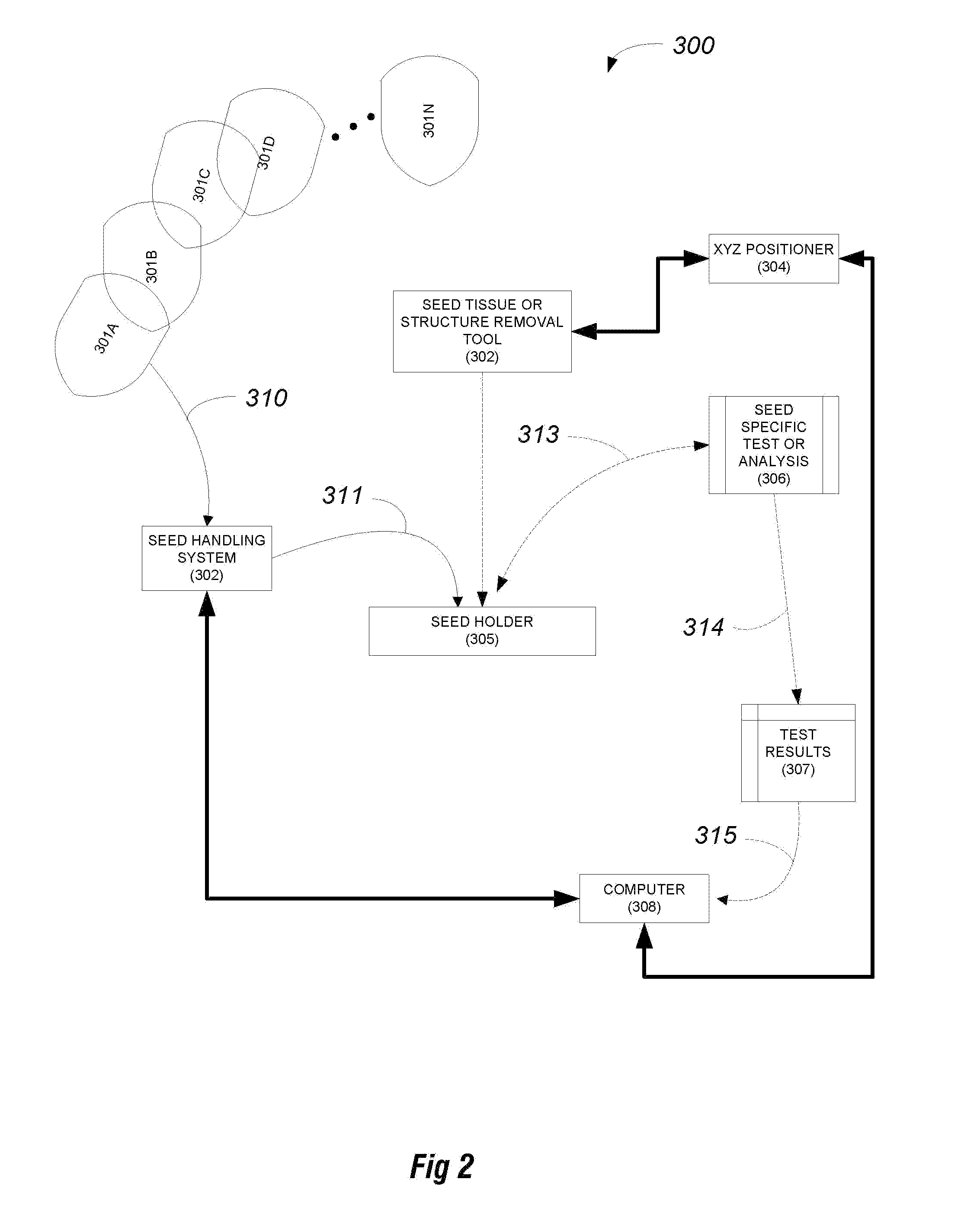Apparatus for removal of specific seed tissue or structure for seed analysis
a technology of specific seed tissue and apparatus, applied in the field of apparatus for analyzing seeds, can solve the problems of large resource cost of land, labor and machinery, laborious conventional research and development techniques, etc., and achieve the effects of avoiding reducing resources, and avoiding the time, space and labor of growing
- Summary
- Abstract
- Description
- Claims
- Application Information
AI Technical Summary
Benefits of technology
Problems solved by technology
Method used
Image
Examples
example 1
D. Specific Example 1
FIGS. 2-14
[0079]FIGS. 2-14 illustrate one specific approach to the method of FIG. 1. The tool or method of ablation to remove seed tissue is a laser. In this specific example, a specific seed holder is used for positioning a candidate seed relative to the laser.
[0080]FIG. 2 sets forth diagrammatically a block diagram illustration of a system and apparatus 300 to practice method 200 of FIG. 1. Plural seed samples 301A-N are prepared and provided for processing and analysis to a seed handling system 302. Seed handling system 302 presents the samples 301 to a seed holder 305 which defines a testing location 320. A tissue removal tool 302 is controllable by positioner 304 to operate on a seed in the test position 320, specifically to remove a specified amount of seed tissue from a specified area of the seed. Once the tissue is removed, a seed specific test 306 is performed on the seed. As indicated, in this example, the test is performed at the testing location, whi...
specific example 2
E. Specific Example 2
FIGS. 15-17
[0153]Instead of, or in some cases in addition to, removing tissue to gain access to the interior of a candidate seed, the removed tissue (or a portion thereof) can be collected and tested or analyzed. The test(s) or analysis(es) could be used to make selection decisions.
[0154]FIG. 15 shows in diagrammatic form a specific example. It is similar to FIG. 1 but with the following major differences.
[0155]The method 400 of FIG. 15 utilizes some tissue removal tool or method 402 to remove specific tissue from a candidate seed 401A. Seed 401A can be positioned in some holder component or position 405. The removed tissue (or a portion thereof) is collected in a collection container 403. Seed specific analysis is conducted of the collected removed tissue (reference number 406. The results are used (step 407) to make decisions (e.g., selection or not of the type of seed 401A for further use). Optionally, the test results and / or decision(s) can be stored or used...
PUM
| Property | Measurement | Unit |
|---|---|---|
| structure removal force | aaaaa | aaaaa |
| structure | aaaaa | aaaaa |
| removal force | aaaaa | aaaaa |
Abstract
Description
Claims
Application Information
 Login to View More
Login to View More - R&D
- Intellectual Property
- Life Sciences
- Materials
- Tech Scout
- Unparalleled Data Quality
- Higher Quality Content
- 60% Fewer Hallucinations
Browse by: Latest US Patents, China's latest patents, Technical Efficacy Thesaurus, Application Domain, Technology Topic, Popular Technical Reports.
© 2025 PatSnap. All rights reserved.Legal|Privacy policy|Modern Slavery Act Transparency Statement|Sitemap|About US| Contact US: help@patsnap.com



